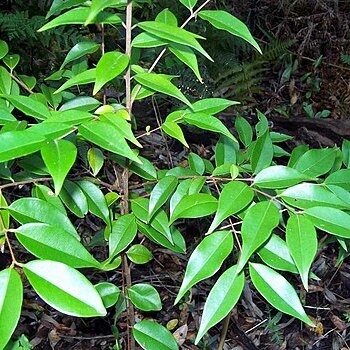Shrubs or trees. Branchlets terete or 4-angled, glabrous or pubescent. Stipules small, filiform, caducous. Leaves opposite, petiolate; leaf blade punctate, pinnately veined, with intramarginal veins. Inflorescences axillary and 1-3-flowered dichasia, racemes, or thyrses, sometimes terminal and paniculate. Flowers bisexual or sometimes staminate, 3-5-merous, often fragrant; bracteoles often small, sometimes caducous. Hypanthium globose, urceolate, or obconiform. Calyx lobes sometimes subequal, persistent. Petals pink or white, punctate. Stamens numerous, in several series; filaments filiform; anthers globular, dorsifixed, dehiscing by longitudinal slits; connectives usually terminating in an apical gland. Ovary 3-13-loculed, placentation axile; ovules 1-2[-4] per locule, collateral. Style filiform; stigma capitate or peltate. Fruit a berry, globular, vertically ribbed, usually 1-or 2-seeded per locule. Seeds separated by a vertical false septum; seed coat and pericarp separate; testa bony; embryo horseshoe-shaped; radicle long; cotyledons short.

